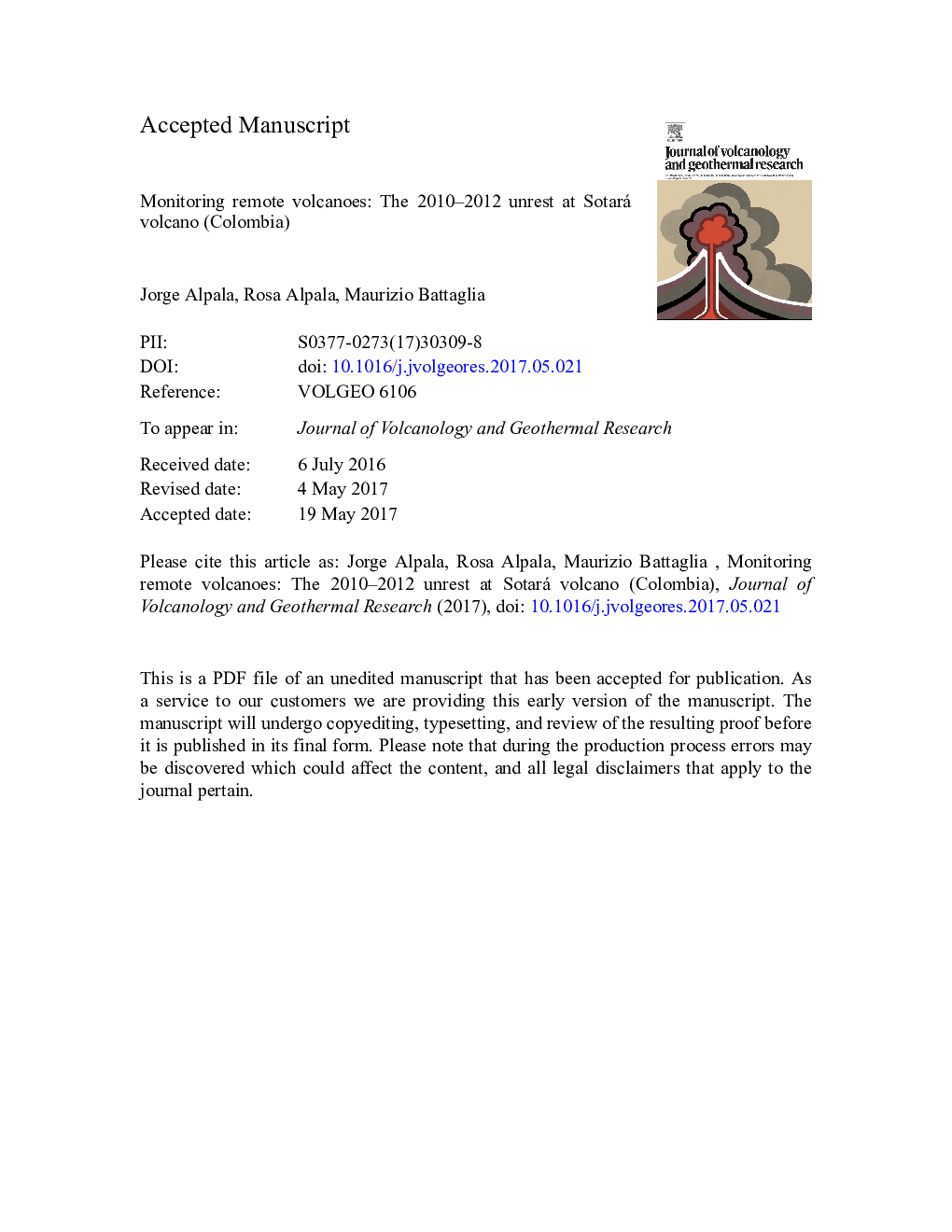| Article ID | Journal | Published Year | Pages | File Type |
|---|---|---|---|---|
| 5783730 | Journal of Volcanology and Geothermal Research | 2017 | 21 Pages |
Abstract
Sotará is a little known andesitic-dacitic stratovolcano in southern Colombia (Central Cordillera, Cauca Department). Its remote location and the lack of accessible roads make studying and monitoring Sotará volcano difficult. No historical eruptions are known, though there is current geothermal activity. Between the fall of 2010 and the fall of 2012 a small magma intrusion (depth ~ 1 km, ÎV ~ 105 m3) triggered surface deformation and volcano-tectonic earthquakes but failed to reach the surface. This episode of unrest started with the volcano-tectonic earthquake of September 2010 (ML 4.4). Although one electronic tiltmeter recorded significant deformation between Jan 2011 and July 2012 (137 ± 7 μrad), seismic activity remained at background levels until May 2012. Between June and September 2012, seismicity increased dramatically with an average of 120 volcano-tectonic events per day of magnitude up to 2.2. The epicenters of these events were initially located 6 km NE of the volcano but then migrated along a linear fracture towards the NW summit of the volcano. At the same time, the hypocenters moved closer to the surface as well: from a depth of 3-6 km for the initial events to a depth of 1-4 km for the events at the end of the summer. Although the dike intrusion did not culminate in an eruption, and seismicity and deformation returned close to background levels by January 2013, this episode of unrest is a reminder that Sotará is an active volcano and should be carefully monitored.
Related Topics
Physical Sciences and Engineering
Earth and Planetary Sciences
Geochemistry and Petrology
Authors
Jorge Alpala, Rosa Alpala, Maurizio Battaglia,
